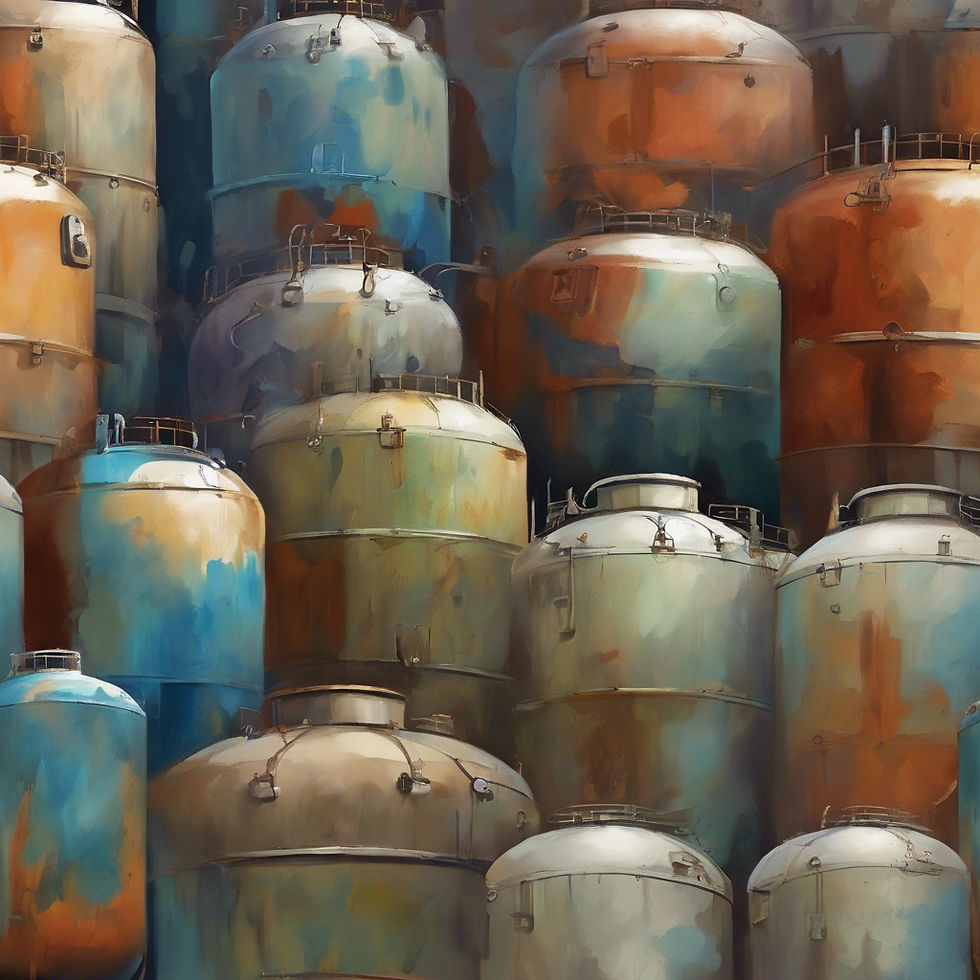"Maximizing Efficiency: When to Split the Flow in Large Pressure Vessels"
- morgancostigan
- Jun 28, 2024
- 2 min read
The Evolution of Pressure Vessels: Bigger Isn't Always Better
In the dynamic world of natural gas processing, the trend toward larger pressure vessels has become increasingly prominent. These massive containers, designed to hold gases or liquids at pressures substantially different from the ambient pressure, are essential for various stages of gas processing. However, as these vessels grow in size, it's worth considering the benefits of a more flexible approach—splitting the flow.
The Push for Larger Vessels
Several factors drive the trend toward larger pressure vessels:
Economies of Scale: Larger vessels can process more gas, potentially reducing the cost per unit of gas processed.
Increased Capacity: With the growing demand for natural gas, larger vessels can meet higher processing needs without requiring additional infrastructure.
Technological Advancements: Improvements in materials and construction techniques have made it possible to safely build and operate larger vessels.
Despite these advantages, the pursuit of ever-larger pressure vessels isn't without its challenges. These include higher initial costs, increased maintenance complexity, fewer manufacturers who can provide the work, due to crane capacities, and greater risks in case of failure.

Splitting the Flow: A Versatile Solution
An alternative approach gaining traction is splitting the flow of gas into multiple, smaller pressure vessels. This method offers several compelling advantages:
Flexibility: By using multiple smaller vessels, facilities can easily adjust their processing capacity to match demand. This is particularly useful in natural gas processing, where requirements can vary significantly over time.
Redundancy and Reliability: Multiple vessels mean that if one unit requires maintenance or encounters an issue, the others can continue operating, ensuring uninterrupted processing.
Reusability: Smaller vessels are easier to repurpose for different applications. As processing needs change, the same equipment can be reconfigured to handle new tasks without the need for extensive modifications or the construction of entirely new infrastructure.
Future-Proofing Natural Gas Processing
Splitting the flow not only addresses the immediate operational flexibility but also future-proofs facilities. As the natural gas industry evolves, processing plants must adapt to new technologies, regulations, and market demands. Reusing existing equipment becomes a significant advantage in this context, offering cost savings and reducing downtime.
Moreover, the modular nature of multiple smaller vessels aligns with the industry's move toward more agile and responsive operations. This approach allows for gradual scaling and upgrading of facilities, ensuring they remain competitive and efficient in a rapidly changing landscape.
Conclusion
While the trend towards larger pressure vessels in natural gas processing offers certain benefits, the strategy of splitting the flow into multiple smaller vessels provides a versatile and future-proof solution. When you are bidding out your high pressure vessels and have fluid flows that require vessel diameters exceeding 72", ask the vendor if they could quote a case for splitting the flow. It's simple to do with our www.productionequipmentdesign.com sizing application and then evaluate the economics of that choice. Your vessels might already be sitting in their yard ready for delivery. By embracing this approach, the industry can achieve greater flexibility, reliability, and adaptability, ensuring that facilities remain efficient and cost-effective for years to come.
Tell me in the comments, when have you made the decision to split flow? Why? How'd it go? If you've made the decision not to, why? What should be the top priority in consideration?



Comments